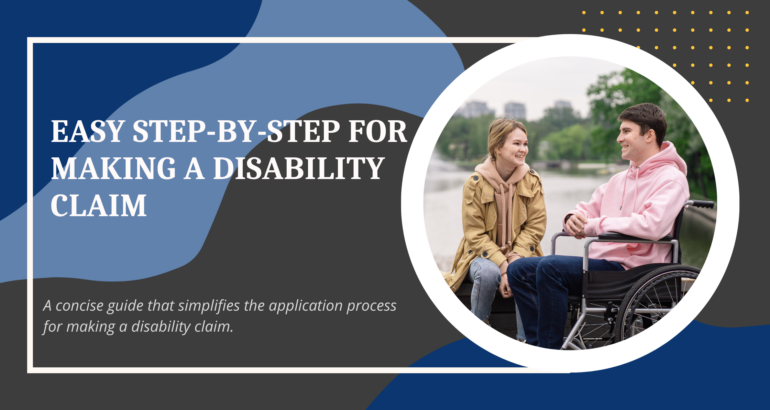
If you have a disability that prevents you from working, you may be entitled to government benefits. Disability claims can be complex and confusing, but you can improve your chances of success with the correct information and guidance. This article will walk you through the steps to make a disability claim.
Step 1: Gather Your Information
Before you start your disability claim, gathering all the necessary information is essential. You must provide information about your medical condition, work history, and financial situation.
Medical Information: The first thing you need to do is gather all your medical information. This includes doctor’s reports, test results, and other medical documents supporting your disability claim. You should also keep a list of all your medications and any other treatments you receive.
Work History: You must also provide information about your work history, including your most recent job and the type of work you did. You must provide information about your job duties, how long you worked, and how much you earned.
Financial Information: You must also provide financial information, including your income, expenses, and assets. This information will help determine if you are eligible for disability benefits.
Step 2: Understand the Eligibility Criteria
To be eligible for disability benefits, you must meet the following criteria:
- Your disability must be expected to last for at least 12 months or result in death.
- You must be unable to perform any substantial gainful activity (SGA) due to your disability.
- Your disability must be severe enough to prevent you from doing your job.
If you meet these criteria, you may be eligible for disability benefits. However, it’s important to note that the eligibility criteria may vary depending on the disability benefit you are applying for.
Step 3: Determine Which Disability Benefit You Need
There are two types of disability benefits available in the United States: Social Security Disability Insurance (SSDI) and Supplemental Security Income (SSI). SSDI is for people who have worked and paid Social Security taxes, while SSI is for people who have not worked or have low income and resources.
To determine which disability benefit you need, consider your work history and financial situation. If you have worked and paid Social Security taxes, you may be eligible for SSDI. If you have not worked or have low income and resources, you may qualify for SSI.
Step 4: File Your Disability Claim
Once you have gathered all the necessary information and determined which disability benefit you need, it’s time to file your disability claim. You can file your claim online, by phone, or at your local Social Security office. When filing your claim, including all the necessary information and medical documentation. The more information you provide, the better your chances of success.
Step 5: Wait for a Decision
After you file your disability claim, you must wait for a decision. The Social Security Administration (SSA) will review your claim and determine if you are eligible for disability benefits. The review process can take several months, so patience is essential. If your claim is denied, you can appeal the decision. However, the appeals process can be complicated, so seeking legal advice is critical.
Making a disability claim can be a complex and confusing process, but it’s essential to understand the steps involved to improve your chances of success. By gathering all the necessary information, understanding the eligibility criteria, determining which disability benefit you need, filing your claim, and waiting for a decision, you can take the first steps toward receiving the benefits you deserve. If you need assistance, consider seeking legal advice from a disability attorney or advocate. They can help guide you through the process and increase your chances of success.
